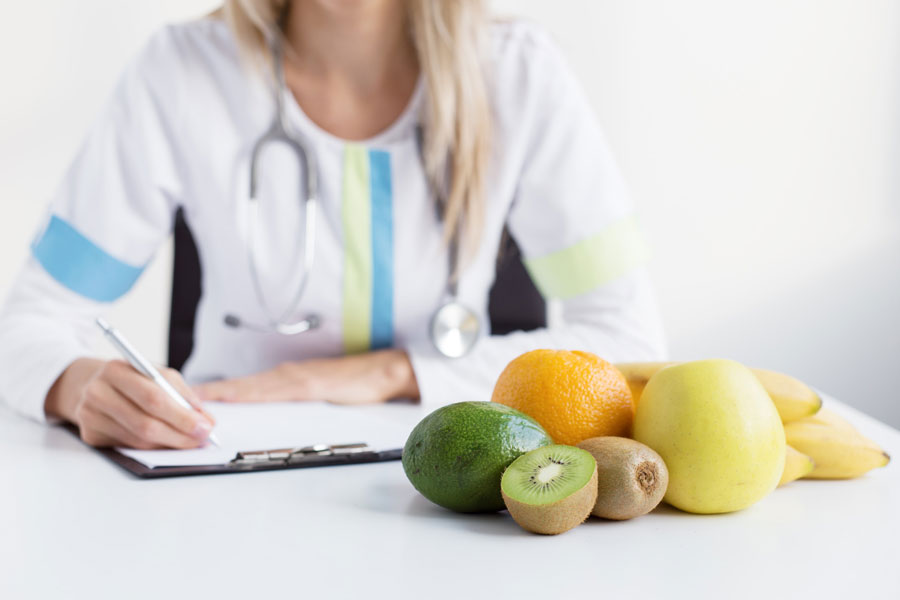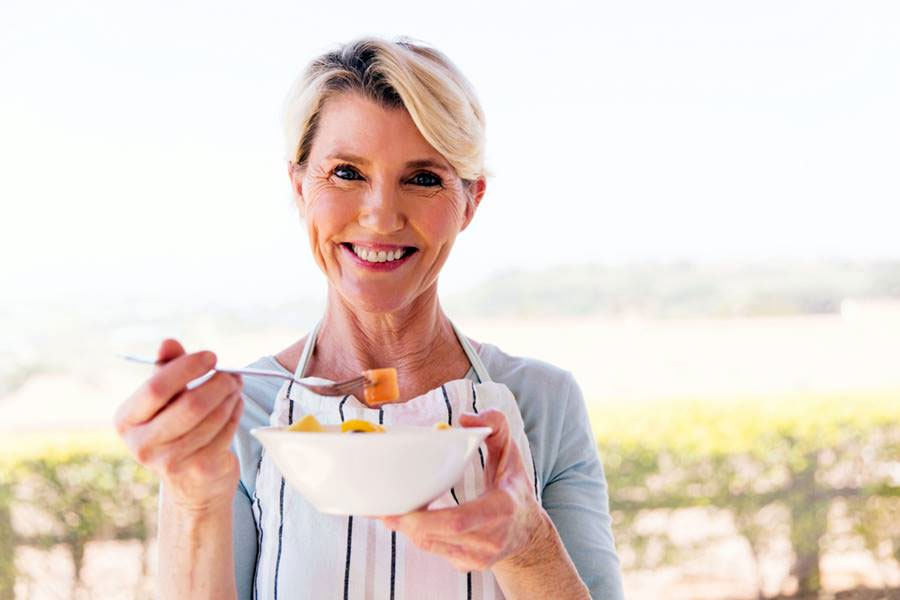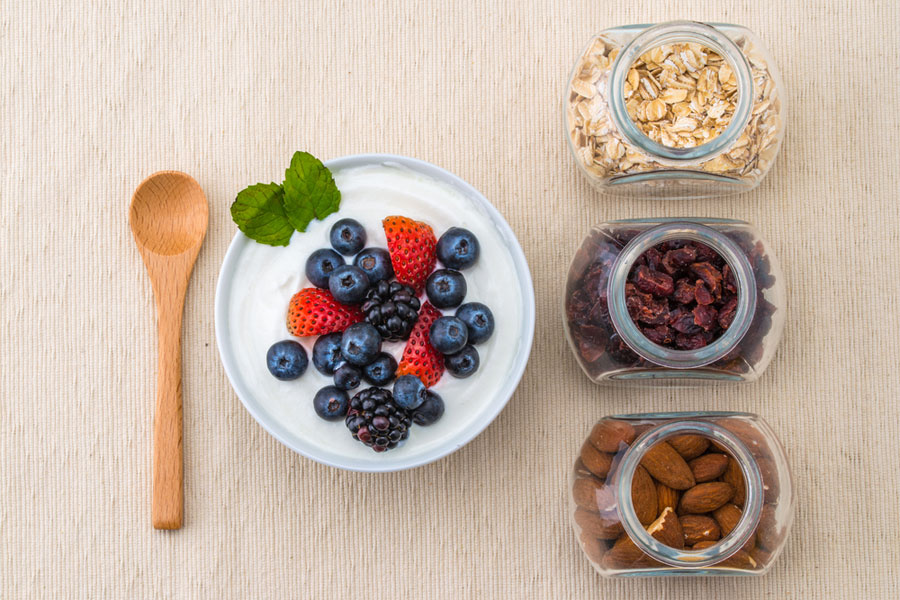Nutritional Management Guidelines of Various Diseases

Heart Disease
Cholesterol related heart disease is a build up of plaque in the arteries that result from too much LDL cholesterol. Insulin -resistance heart disease --linked to a family history of early heart attacks or diabetes -- occurs when cells don't respond to normal amounts of the hormone insulin, so the body compensates by cranking out more, damaging heart vessels. A third form of the disease has been traced to the amino acid homocysteine ; high levels can injure blood vessels, setting the stage for a coronary blockage. Your optimal diet depends on which variety of this deadly ailment runs in your family.
More : Fibre, Folic Acid
Fibre fights the cholesterol and insulin types of heart
disease.
-
Soluble fibre, the kind in oats, apples, beans, and
barley, binds with bile and prevents cholesterol from being absorbed
into your bloodstream during digestion.
-
Insoluble
fibre -found in
whole grain bread, brown rice, bran cereal, and crunchy fruits and
vegetables --slows the breakdown of carbohydrates into glucose ;
this is especially important if you're at risk for insulin
resistance, because glucose forces the pancreas to churn out the
very thing your body has trouble using : insulin.
Get as much fibre as you can. Green beans, ladies finger, cauliflower, spinach, tomatoes and oranges all have the added benefit of being loaded with folic acid. This B vitamin is essential if you're at risk for the kind of heart disease linked to homocysteine, which is produced naturally during the digestion of animal protein. Without enough folic acid (400 micrograms a day), your body can't dispose of this pesky amino acid. The fresher the produce, the better, because B vitamin disintegrates quickly.
Less : Fat, Cholesterol, Protein, Low-Fibre Carbohydrates
If elevated cholesterol or homocysteine is your problem, a
radical diet that contains no meat, virtually no fat, unlimited
fruits, vegetables, grains, and legumes --may be effective. Studies have shown that if you keep fat between 10 and 15 per cent of
the total calories you consume each day, it's possible to stop and even reverse
clogging of the arteries. By steering clear of meat, you'll avoid
not just the worst kind of fat (saturated) but also cholesterol and
animal protein. The little fat that you do eat should be
monounsaturated (such as olive or canola oil), which has been shown
to lower blood cholesterol. But if you 're at risk for
insulin resistance, drastic restrictions on fat may do more harm
than good. Such a diet plan overflows with carbohydrates, upping
the likelihood you'll overdo on low - fibre cards such as
potatoes, white bread, and refined grains. Research shows these
carbohydrates are glucose time bombs, breaking down in the bloodstream
almost as quickly as sweets do and triggering the production of
insulin. Consult our WF dietitian about how much fat you should eat (probably
25 to 40 per cent of your daily calories).
To lower your blood cholesterol, remember to:

|
Note: Fish
is the nutritional equivalent of a force field for the heart. The
magic comes from omega -3 fatty acids. which relax narrowed
arteries, inhibit the formation of life threatening clots, and
reduce blood levels of harmful cholesterol ; they even prevent
cardiac arrhythmia and lower blood pressure. Some fish are also
rich in B vitamins.
Osteoporosis
Body uses calcium and phosphate to build strong bones. If you do not get enough calcium from your diet at this critical stage of life, you may not have enough bone mass to sustain good bone health throughout your mature years. As you age, your body can take the calcium and phosphate that is stored in your bones to support the functioning of other organs. This can cause the bones to become fragile and brittle.
Both of these factors put you at risk for the progressive thinning and weakening of bone known as "osteoporosis."
More : Calcium, Vitamin D
Bones are the body's repository of calcium, and like any bank they
gain and lose reserves all the time. To keep them well supplied,
you need at least 1,000 milligrams of calcium a day, (your daily
requirement jumps to 1,500 mg if you've passed menopause and
aren't taking estrogen.) Lucky for you, TODAY plenty of delicious food
are brimming with the mineral, including dairy products, many
green vegetable, soybeans, oranges, and seafood. All it takes to
meet your daily requirement : a cup of skin milk at breakfast, cup
of low fat yoghurt, some chickpeas (whole) and an orange at lunch,
and a couple of pieces of the mackerel (bangda) at dinner. Round
off the day with with a cup of skin milk. A word to the wise :
Some calcium -rich veggies -- including spinach and leafy greens
-- are also high in oxalates, chemicals that bind with calcium in
the intestine and prevent the mineral from being used. Don't rely
on these foods to meet your calcium quota.
Less: Salt, Caffeine, Alcohol
Studies have linked too much salt and caffeine to poor absorption or depletion. Break the habit of reaching for the salt- shaker, avoid sodium -laden processed foods, and stop at two cups of coffee per day -- with low - fat milk to replenish calcium lost to the caffeine. Liquor also interferes with bone formation.
Note: Soy-based foods -- tofu, soy milk, and cooked soybeans -- aren't just good sources of calcium; they're also rich in phytoestrogens. Recent evidence suggests these plant-based estrogens stimulate bone formation and inhibit bone breakdown without the boost to breast cancer risk associated with hormone replacement therapy.
Diabetes
You might assume preventing this potential killer means giving up sugar. But with a little menu planning, you can have your cake and eat it too.
More: Fibre, Monounsaturated Fat

Harvard researches recently reported that women who eat a diet
chock full of whole grains and other high - fibre foods can
dramatically reduce their chances of developing Type2 (adult-onset) diabetess.
But don't stop there; plan your meals around high fibre. low glycemic foods, that is, foods that do not spike the blood sugar level instantly such as beans, peas, green gram, Bengal gram and crunchy fruits and vegetable. Include fenugreek seeds into as many dishes possible. Fenugreek seeds are not only rich in fibre, but also contain an alkaloid called trigonelline which has been shown to reduce blood sugar levels in many studies. It also also has the added benefit of lowering cholesterol and triglycerides. Ask your doctor how much fat you should eat, because the answer depends on your overall medical condition. In any case, emphasize monounsaturated fats, and go easy on saturated fats.
Less: Sugar, Low -Fibre Carbohydrates
Yes, foods that are rich in simple sugars -- soft drinks, fruit juices, desserts, jams, jellies, honey -- can spike your blood sugar level and overload your pancreas. But you needn't cut out sweet entirely. just limit them to less than 200 calories a day. And eat fibre-rich instead of having them in the from of juices. Be equally vigilant about low- fibre carbohydrates like refined flour. In the Harvard study people who ate lots of white bread and refined grains were more than twice as likely to develop Type 2 diabetes as those who chose high-fibre carbohydrates.
Note: How you eat is as important as what you eat. To slow the glucose rush. have any sweets or refined carbohydrates as part of a meal. Don't wolf your food, and don't skip a meal ; these habits throw your sugar levels out of whack and worsen hypoglycemia (low blood sugar), often a precursor to diabetes.
High Blood Pressure
Blood Pressure is force exerted by the blood on the inner walls of the blood vessels, and is related to the elasticity and diameter of the vessels and the force of the heartbeat.
For years
doctor's advise on reducing high blood pressure was peppered with
warnings to cut back on salt. But health experts now think sodium is
just one of several minerals to watch.
More: Fibre, Low-Fat Dairy Products
Last year a study showed that the proper diet can lower systolic reading by 11 points, comparable to what's possible with drugs. The volunteers achieved their stunning results by eating ten servings of fruits and veggies a day (double the amount experts recommend). Because scientists don't know whether to credit a single nutrient or the whole combination platter, shop for vegetable and fruits that run the gamut from green to yellow to red. Four bananas a day can help to keep your heart healthy, says American cardiac specialist Milton Packer of Mount Sinai Medical School, predicting that warnings to hypertensive against potassium deficiency will soon rival those against excessive salt. Just as noteworthy, the volunteers ' diet included two or three servings of low-fat dairy products. Celebrate by having a cup of yoghurt or a glass of skin milk.
Less: Salt, Alcohol
Sodium is no longer the out -nard - out villain it used to be. The human guinea pigs who lowered their blood pressure without drugs ate about 3,000 milligrams per day, only a little less than the average. While there's evidence some people can ignore salt warnings, most experts still advocate cutting back to 2,400 mg. Saying no to chips and other processed snacks is a good start. Heavy drinking has been found to double the risk of hypertension. Women should stop at one drink a day.
NOTE: The news on potassium gets better and better, so go all out to
include this mineral in your diet. A new study found that 1,600
milligrams of potassium every day kept blood pressure down. Best
sources : bajra, bengel gram (whole, desi variety), green gram dal,
urad dal, drumstick leaves bitter gourd, bananas, musk melon,
chickoos.
Breast Cancer
A healthy diet is
very important for someone undergoing the treatment for Breast
Cancer. There are many things that can be done that may help reduce your risk of breast cancer:
More: Fruits And Vegetables, Soy
Extra fibre isn't the goal here. You're more interested in carotenoids and antioxidants, and phytoestrogens --all credited with foiling the development of tumours. To cover the bases, eat a broad mix : green beans, cabbage, cauliflower, green leafy vegetables, soybeans, sweet potato, carrots, onions, papaya, mango, and citrus fruits. Eat high-fiber cereal for breakfast every day. Aim at using whole grain breads and brown rice.
Less: Fat, Alcohol
New research suggests that fat consumption has no direct link
with increased cancer risk. However, too much
fat can cause obesity, and it has definitely been shown that women
who gained 20 to 40 pounds as adults had a sixty per cent
likelihood of developing breast cancer as a result of the weight
gain alone. This is especially true of menopausal women So scale
back your fat consumption to no more than 30 per cent of total
calories ; aim for 20 per cent if you've passed menopause. And
start cutting sooner rather than later : A study last year found
that women who follow a high -carbohydrates. low -fat diet (15 percent of
total calories) can reduce the worrisome "dense tissue"
in their breasts by 6 per cent over two years.
As little as two drinks a day may
ratchet up your odds of developing breast cancer by 40 per cent. Decrease caffeine if bothered by lumpy, tender breasts with symptoms becoming worse just before your period. Caffeine is found in coffee, tea, colas, chocolate and some medicines.